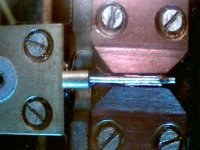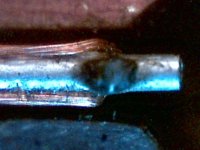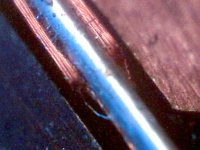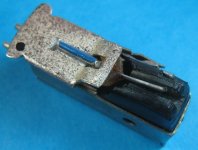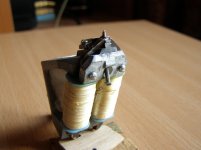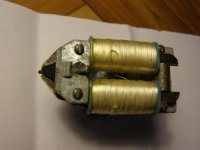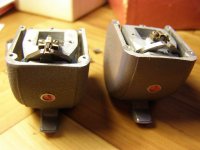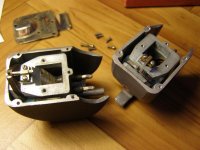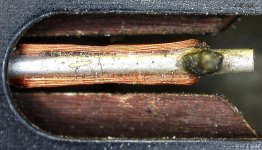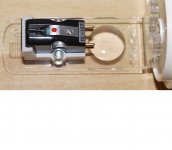bulgin & walterwalter,
Both of you are actually making moving coil cartridges, so maybe you could explain the physics of why moving coil should be superior to moving magnet. I’m a retired electrical engineer and I get the advantages of air core coils and MC low coil resistance and inductance compared to MM’s, but MM resistance and inductance issues can largely be dealt with by proper loading. In principle both MC and MM generate voltage by a wire cutting magnetic lines, either by moving the wire through a stationary magnetic field or conversely by moving a magnet so the magnetic lines move through the wire. Why is moving the coil preferred? My observation over the years is that MC cartridges have had more difficulty with keeping moving mass down than MM and have historically compromised/compensated with higher VTF to keep that higher moving mass in contact with the groove.
I actually have an original Neumann DST but have not yet acquired a suitable arm and SUT or preamp for it. Among my concerns is that it requires 6g VTF and even worse, with the small gap between the coils and the pole pieces, it looks to have very limited cantilever excursion capability. I have several ‘hot’ LP’s that have passages that I’m sure would exceed the DST’s limits.
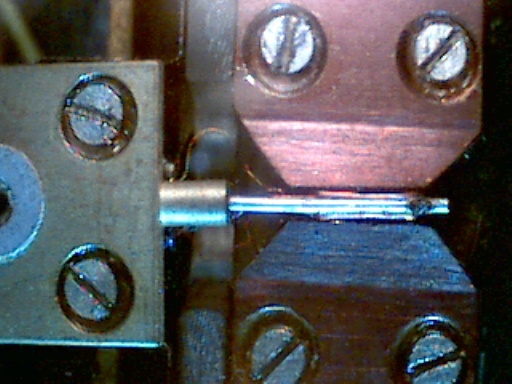
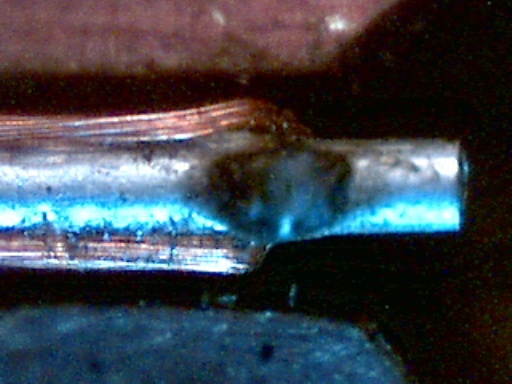
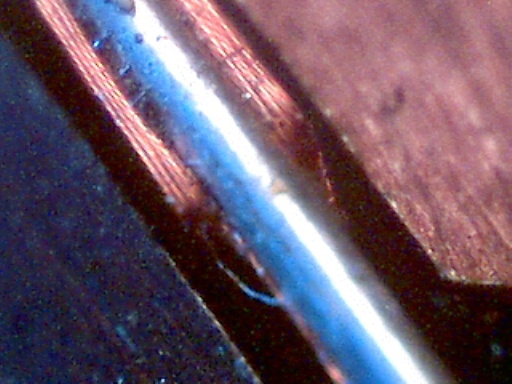
On the plus side, I would expect the DST to have that certain magical ‘x’ factor similar to a Decca 4RC that I once owned. I theorize that the key to this magical ‘x’ factor is more related to the location of the generating element rather than whether it’s MC or MM. The Decca cartridges are technically Moving Iron (?) but unlike other MI cartridges the actual generating element is near the stylus tip and not at the opposite end of a see-saw pivoting about the cantilever suspension. There is a big following loyal to the old General Electric variable reluctance cartridges (also MI?) where the signal generation likewise takes place near the stylus tip. The advantages of generating the signal voltage near the stylus tip make sense to me, as cantilever bending and mechanical resonances shouldn’t degrade the signal as much.
My next pursuit is restoring/renovating a Weathers FM cartridge. Like the DST, Decca, and GE, the signal sensing in the Weathers is on the stylus side of the pivot, right up to and including the tip. It uses the entire cantilever as a capacitive element controlling a RF oscillator. It has no moving coil, magnet, or iron mass at all. The big gotcha is that it is mono only.

But getting myself back on topic, bulging/walterwalter, help me understand why it has to be MC? Couldn’t we also take a MM stylus and design it with the magnet on the stylus side of the cantilever suspension, along the same lines as the Neumann MC, Decca MI, GE MI, or Weathers RF? Looking forward to your thoughts.
Ray K
Both of you are actually making moving coil cartridges, so maybe you could explain the physics of why moving coil should be superior to moving magnet. I’m a retired electrical engineer and I get the advantages of air core coils and MC low coil resistance and inductance compared to MM’s, but MM resistance and inductance issues can largely be dealt with by proper loading. In principle both MC and MM generate voltage by a wire cutting magnetic lines, either by moving the wire through a stationary magnetic field or conversely by moving a magnet so the magnetic lines move through the wire. Why is moving the coil preferred? My observation over the years is that MC cartridges have had more difficulty with keeping moving mass down than MM and have historically compromised/compensated with higher VTF to keep that higher moving mass in contact with the groove.
I actually have an original Neumann DST but have not yet acquired a suitable arm and SUT or preamp for it. Among my concerns is that it requires 6g VTF and even worse, with the small gap between the coils and the pole pieces, it looks to have very limited cantilever excursion capability. I have several ‘hot’ LP’s that have passages that I’m sure would exceed the DST’s limits.
On the plus side, I would expect the DST to have that certain magical ‘x’ factor similar to a Decca 4RC that I once owned. I theorize that the key to this magical ‘x’ factor is more related to the location of the generating element rather than whether it’s MC or MM. The Decca cartridges are technically Moving Iron (?) but unlike other MI cartridges the actual generating element is near the stylus tip and not at the opposite end of a see-saw pivoting about the cantilever suspension. There is a big following loyal to the old General Electric variable reluctance cartridges (also MI?) where the signal generation likewise takes place near the stylus tip. The advantages of generating the signal voltage near the stylus tip make sense to me, as cantilever bending and mechanical resonances shouldn’t degrade the signal as much.
My next pursuit is restoring/renovating a Weathers FM cartridge. Like the DST, Decca, and GE, the signal sensing in the Weathers is on the stylus side of the pivot, right up to and including the tip. It uses the entire cantilever as a capacitive element controlling a RF oscillator. It has no moving coil, magnet, or iron mass at all. The big gotcha is that it is mono only.
But getting myself back on topic, bulging/walterwalter, help me understand why it has to be MC? Couldn’t we also take a MM stylus and design it with the magnet on the stylus side of the cantilever suspension, along the same lines as the Neumann MC, Decca MI, GE MI, or Weathers RF? Looking forward to your thoughts.
Ray K
Attachments
Ray, it has already been done long time ago, in the middle of the last century. And it worked very well. In Paraflux mono professional induced magnet cartridge, a small piece of metal, located co-axially with diamond, works as an induced magnet. From the mechanical point of view, with the same setup we may put there moving coils, instead of magnet, and it will work . Actually, channel separation easier to achieve with Neumann-like coils, than with moving magnets, in case of stereo cart. Decca-like design is complicated. Maybe, someone of DIY-ers here will create MM with simplicity of Neumann, and motor location near the diamond? I'm looking forward to see it.
As to "The advantages of generating the signal voltage near the stylus tip make sense to me, as cantilever bending and mechanical resonances shouldn’t degrade the signal as much", I would agree.And in that case we have additional advantage of not decreasing the already microscopically small amplitude of stylus movements.
As to "The advantages of generating the signal voltage near the stylus tip make sense to me, as cantilever bending and mechanical resonances shouldn’t degrade the signal as much", I would agree.And in that case we have additional advantage of not decreasing the already microscopically small amplitude of stylus movements.
Attachments
Last edited:
walterwalter,
Got a new USB microscope to play with. Took a hi-res picture. It looks like the spiral striping effect in my other photos is some form of Moire' effect optical illusion. BTW, what's the safest way for me to clean this? It almost looks like some microscopic metal filings.
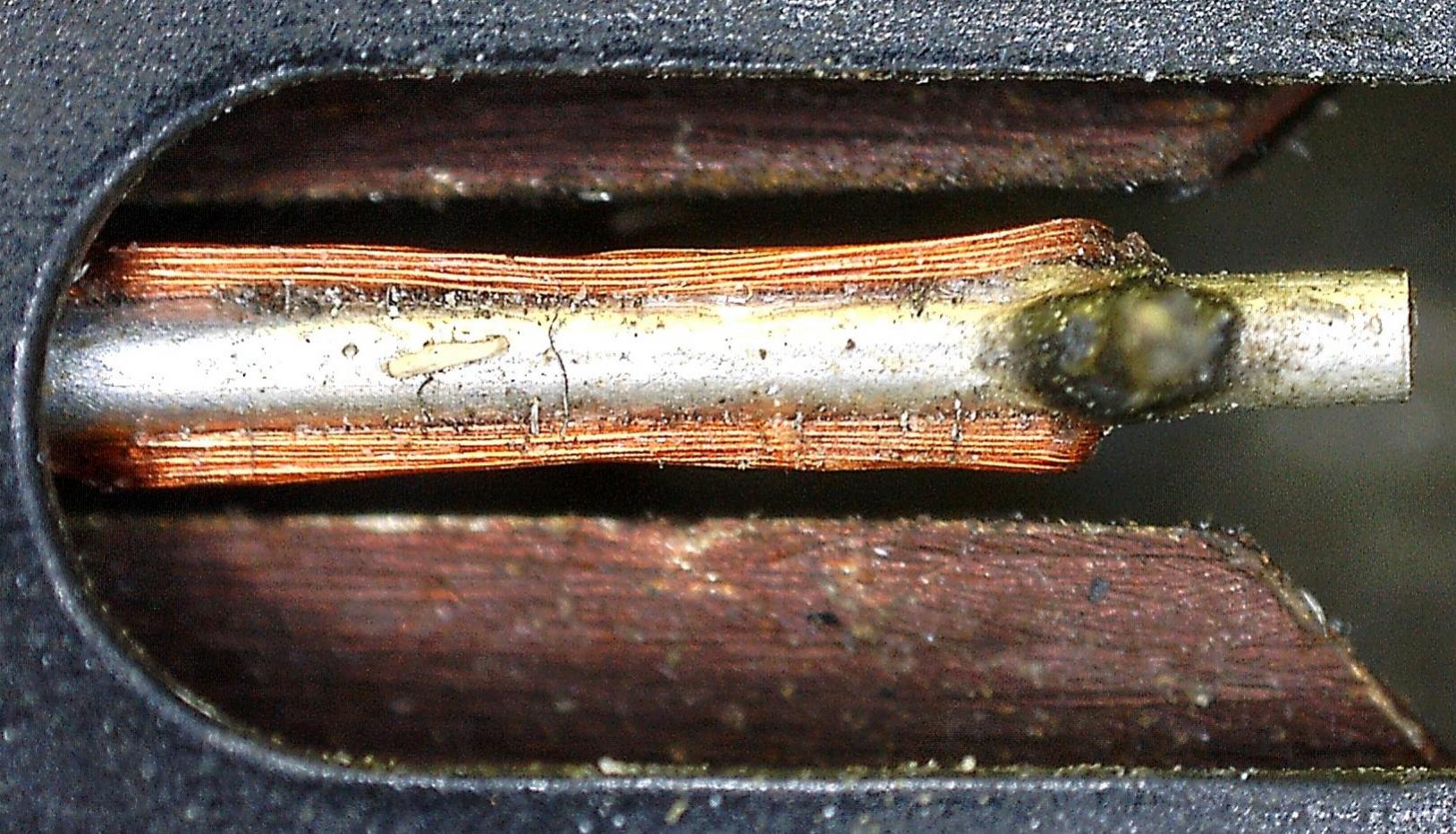
Ray K
Got a new USB microscope to play with. Took a hi-res picture. It looks like the spiral striping effect in my other photos is some form of Moire' effect optical illusion. BTW, what's the safest way for me to clean this? It almost looks like some microscopic metal filings.
Ray K
Attachments
Thank you, Ray. Now I can clearly see the coils, and even count number of turns. I'm going to build DST replica and compare triangular coils to other shapes. For now both my DIY mono and stereo cartridges are working with very good sound performance. Air coils for certain are better, than those with a core, and location near the diamond is great. I, honestly, can hardly understand, why put them on the other side of cantiliver, where already microscopically small amplitude is decreased several times. Not a smart solution, what is commonly accepted.
Diyraik I actually have an original Neumann DST but have not yet acquired a suitable arm and SUT or preamp for it. Among my concerns is that it requires 6g VTF and even worse, with the small gap between the coils and the pole pieces, it looks to have very limited cantilever excursion capability. I have several ‘hot’ LP’s that have passages that I’m sure would exceed the DST’s limits.
DST were made for the purpose of studio monitoring freshly cut records. So, we may expect it will track grove on even the most difficult passages. I will be surprised if not.
As to concern about high VTF, IMO 6gram is almost on the margin ( which is about 8 gram) of to be safe for the record. In my experience with many MC, with up to 3 gram VTF there are no traces of record wear. The same with both my DIY core-less MC, they track at 3-3,5 gram.
DST were made for the purpose of studio monitoring freshly cut records. So, we may expect it will track grove on even the most difficult passages. I will be surprised if not.
As to concern about high VTF, IMO 6gram is almost on the margin ( which is about 8 gram) of to be safe for the record. In my experience with many MC, with up to 3 gram VTF there are no traces of record wear. The same with both my DIY core-less MC, they track at 3-3,5 gram.
Last edited:
Probably because the coil is moving in a homogenous field at MC, while an MM generates an inhomogenous field, leading to higher distortion. Perhaps channel separation is also better due to same reason.In principle both MC and MM generate voltage by a wire cutting magnetic lines, either by moving the wire through a stationary magnetic field or conversely by moving a magnet so the magnetic lines move through the wire. Why is moving the coil preferred?
Probably because the coil is moving in a homogenous field at MC, while an MM generates an inhomogenous field, leading to higher distortion. Perhaps channel separation is also better due to same reason.
‘Probably’ and ‘perhaps’ are terms that indicate these are assumptions. They are plausible assumptions, but assumptions nonetheless. I’m looking for convincing scientific explanation/evidence why one would be intrinsically superior to the other.
Ray K
Yes, this is what mc aficionados say, but I am not convinced. The late 60’s ushered in an era of low VTF, high compliance/trackability wars. The mm designs were victors over mc designs in those conflicts. Physics leads me to conclude that the mm designs were able to maintain better stylus tip contact with the groove at lower VTF than mc designs because the mm designs had lower moving mass than mc designs. Of course, mc designs have advanced since then, but so has mm technology. Moving magnet materials have become stronger, smaller, and lighter. Copper used in moving coils, well, still weighs the same as it did 50 years ago.Lower moving mass for mc vs mm
Back on topic, why is moving the wire through the magnetic field better than moving the magnetic field through the wire ?
Ray K
I've never see a credible argument for lower mass for either tech. If you look at the lowest ever effective moving mass cartridges then MM and MC tie for first place, mainly because technics were in competition with themselves.
Likewise distortion. I've not seen anything that really backs up the distortion claim and have yet to have time to do any meaningful measurements myself.
I do however keep collecting odd historical cartridges Latest is the Denon DL-107 which was launched 50 years ago and is made the same basic way as the DL-103. They also did a version which was swappable with the DL-103 for broadcast use! An MM with 0.35mV output. Boggle.
My holy grail at the moment is the Jeweltone/Nagatron ribbon cartridges.
Likewise distortion. I've not seen anything that really backs up the distortion claim and have yet to have time to do any meaningful measurements myself.
I do however keep collecting odd historical cartridges Latest is the Denon DL-107 which was launched 50 years ago and is made the same basic way as the DL-103. They also did a version which was swappable with the DL-103 for broadcast use! An MM with 0.35mV output. Boggle.
My holy grail at the moment is the Jeweltone/Nagatron ribbon cartridges.
Attachments
Here's a link that has some good photos of the Nagatron HV9100:
Nagatron HV-9100 - Vinyl Engine
In the first photo it almost looks like a ceramic cartridge in that it looks like there is a yoke midway along the stylus shaft that couples stylus movement to a generating element. It's not clear what the detailed construction is, but it sounds like it uses a 1 turn 'loop' of ribbon for generating the signal. Technically that would make it a 1 turn 'moving coil' and, if the motion is sensed on the stylus side of the suspension, the design would be in the spirit of the Nuemann DST. Interesting.
Ray K
Nagatron HV-9100 - Vinyl Engine
In the first photo it almost looks like a ceramic cartridge in that it looks like there is a yoke midway along the stylus shaft that couples stylus movement to a generating element. It's not clear what the detailed construction is, but it sounds like it uses a 1 turn 'loop' of ribbon for generating the signal. Technically that would make it a 1 turn 'moving coil' and, if the motion is sensed on the stylus side of the suspension, the design would be in the spirit of the Nuemann DST. Interesting.
Ray K
Some detailed pics here Cartridge Close-Ups - Show Your Shots! - Page 331 - Vinyl Engine
- Status
- This old topic is closed. If you want to reopen this topic, contact a moderator using the "Report Post" button.
- Home
- Source & Line
- Analogue Source
- What do you know about the original Neumann DST Cartridges and their Copies?
